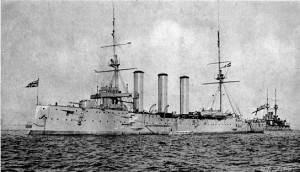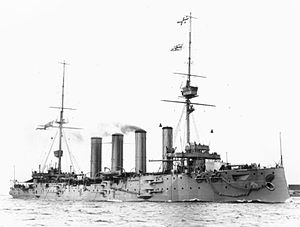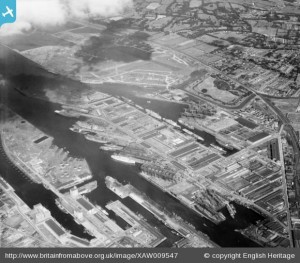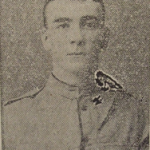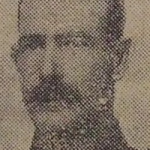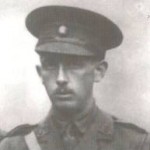Battle of the Falklands – 08 Dec 1914
Prelude to Battle
Following the Battle of Coronel on 01 November 1914 off the coast of Chile, where the Royal Navy had suffered an embarrassing defeat at the hand of Admiral von Spee’s squadron, the Admiralty was making plans to redress the loss. Admiral von Spee clearly realised his actions would not go unpunished. At a post battle celebration in Valparaiso in central Chile, he was given flowers whereupon he commented ‘these will do nicely on my grave’ and refused to drink to ‘the confusion of the British Navy’.
The Admiralty ordered two battlecruisers, HMS Invincible and HMS Inflexible, to sail south to engage von Spee’s squadron on 11 November 1914, despite being told by Devonport dockyard that Inflexible could not be ready until 13 November. The dockyard pulled together and both ships put to sea at 4.45pm on 11 November.
The location of von Spee’s squadron after Coronel was unknown. Would he come through the Panama Canal into the Caribbean Sea? Would he round the Cape Horn into the Southern Atlantic? Would he remain in the Pacific? Was he already off the coast of Brazil as one (false) report suggested? The Admiralty covered all options, but it seemed probable that he would remain off the coast of Chile, so the Falkland Islands would be essential as a coaling base. The battleship HMS Canopus was therefore directed to moor at Port Stanley and guard the islands.
On 23 November, sound intelligence was received by the Admiralty that von Spee remained off the Chilean coast. On 24 November, Admiral Sturdee and Admiral Stoddart were to join forces and move to the Falklands.
Meanwhile, Admiral von Spee had rounded Cape Horn on 02 December with two armoured cruisers (SMS Gneisenau and Scharnhorst) and three light cruisers (SMS Nurnberg, Dresden and Leipzig). On 06 December he made a decision to take the Falkland Islands, expecting to meet a small British squadron at worst. Unknown to him, Admiral Sturdee’s squadron, consisting of two battleships (Invincible and Inflexible), three armoured cruisers (Carnarvon, Kent and Cornwall) and two light cruisers (Glasgow and Bristol) arrived at the Falklands on the forenoon of 07 December. Sturdee’s intention was to coal immediately and sail in search of von Spee on 08 December.
At 7.50am on 08 December, while the British ships were still coaling, Admiral von Spee’s squadron was sighted by lookouts from HMS Canopus. At 8.30am all coaling was ordered to cease and “Action” was sounded. At this moment, SMS Gneisenau and Nurnberg were approaching Port Stanley at a range of eight miles, while the remainder of von Spee’s squadron were at twenty miles. By 9.15am, the two lead German ships were making ready to fire on the wireless station above Port Stanley. Only HMS Carnarvon was ready for action at this point, but Canopus had the first say in the action by firing on the Gneisenau at a range of 11,000 yards.
At 9.40am the Gneisenau had view of the harbour. It must have been a severe shock to see the dense smoke created by an unexpectedly large number of British warships, and worse still, to see the tripod masts of battleships! By 9.45am the Gneisenau and Nurnberg had turned and fled. By 10.00am the British ships were under way and the chase had begun.
By 11.07am the enemy were in sight and it was clear the British ships had the advantage of speed. At 11.30am Admiral Sturdee aboard Invincible ordered that the next meal be taken aboard all ships while they closed in.
At 12.51pm the first shot of the chase was fired by Inflexible at the lagging Leipzig. At 1.20pm, Admiral von Spee made a courageous and honourable move to save the Leipzig and his other light cruisers. He turned his two armoured cruisers around to engage the British and ordered the light cruisers to make their escape. Admiral Sturdee immediately ordered his light cruisers to break away and give chase.
Fate of German Armoured Cruisers
As soon as von Spee ordered the turn, Inflexible opened up on Gneisenau and Inflexible attacked the Scharnhorst. The enemy had not replenished their ammunition since Coronel. Von Spee sought to close the range down to make fire more effective, and held off returning fire until he was close enough. Sturdee realised this and continued to fire at long range. By 3.10pm the action was at its hottest with Gneisenau listing and Scharnhorst burning. By 4.00pm the Scharnhorst’s guns fell silent as she listed to starboard. By 4.17pm she had sunk with the loss of all hands.
The attention of two British battleships now turned on the cruiser Gneisenau. Despite being pounded, she continued to fight bravely. By 5.10pm Admiral Stoddart in the Carnarvon had caught up and joined in. By 5.30pm she was burning furiously and listing heavily, but still firing defiantly. She sank at around 5.45pm with around 200 of her 850 men being picked up by 7.30pm.
Fate of the German Light Cruisers
Unknown to the British, the German Light Cruisers were not in good condition at the point war broke out. After four months cruising with no maintenance periods, they were even worse with doubts raised over the condition of the boilers. Glasgow being the fastest soon caught the Leipzig and opened fire at 2.53pm. The Liepzig turned and launched a broadside at Glasgow. This slowed the Leipzig’s progress and allowed Kent to close up.
Shortly after 3.30pm the German ships scattered on different courses. Cornwall and Glasgow pursued Leipzig while Kent chased Nurnberg. Dresden was able to escape due to her superior speed.
By 4.15pm Cornwall and Glasgow had closed in and engaged Leipzig. Ten minutes later, it was clear that Leipzig was doomed as she was being hit time after time and her speed was falling. But the Leipzig continued to fight for nearly two hours until the Cornwall closed range and began to fire lyddite, a high explosive. A surviving German officer described it as ‘terrific’ and ‘fearful’ as the vessel became an inferno filled with dark smoke lit by the flashes of the bursting shells. By 7.00pm Leipzig’s guns fell silent, but she managed to launch three torpedoes from her starboard tubes. The crew opened the sea cocks to sink the Leipzig and gathered amidships in hope of rescue before she went down. Sadly this was not seen by the British due to the smoke and flames and at 7.50pm, Captain Luce decided to finish Leipzig off at close range. During this, the crew of the Leipzig managed to burn two green lights. Luce ordered cease fire and put rescue boats into the water at 8.45pm. Leipzig, a mass of flames and smoke, turned on her beam ends and sank at 9.23pm. Only eighteen men were saved alive.
The Kent was not known as a good steamer, but by burning almost everything made of wood she had performed a miracle and had got almost within range of the Nurnberg by 5.00pm. The Nurnberg immediately fired her stern guns which went over the Kent, while the Kent’s guns struggled to get close. Things quickly improved as two of the Nurnberg’s boilers had burst slowing her down. The Kent gained ground and soon her guns were within effective range with fire being exchanged from 5.45pm. By 6.00pm the range was very close and the Nurnberg was taking severe punishment, so she turned away. Kent continued to shell at longer range and ten minutes later Nurnberg was on fire with several guns out of action. By 6.25pm Nurnberg had almost stopped in the water. She had a heavy list, was down by the stern, she was ablaze and all her guns were out of action. Just before 7.00pm, Nurnberg hauled down her colours in surrender and sank just before 7.30pm. Kent sent boats to the rescue and continued to search until 9.00pm, but only seven men were saved.
What of SMS Dresden? She had escaped, but Admiral Stoddart’s order to locate and sink her remained. Worn out and with no coal, she was trapped by HMS Glasgow in a Chilean port were her crew scuttled her on 14 March 1915.
By Mark McCrea, History Hub Ulster Member
Reference: Naval Operations – History of the Great War Volume 1 – by Sir Julian S Corbett

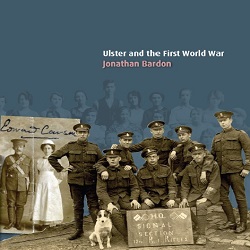 PRONI is pleased to invite you to a lunchtime lecture by renowned author and historian
PRONI is pleased to invite you to a lunchtime lecture by renowned author and historian 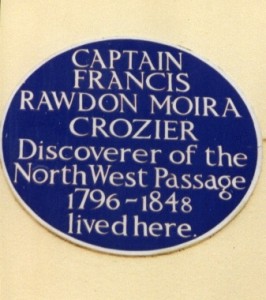
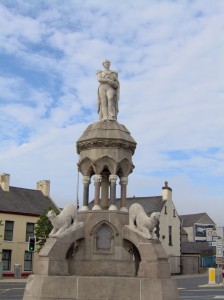

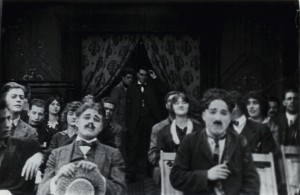 Other highlights include:
Other highlights include: 
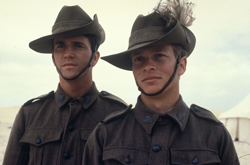 Other films in the programme include: the dazzling technicolor satire
Other films in the programme include: the dazzling technicolor satire 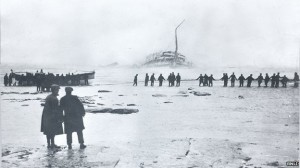
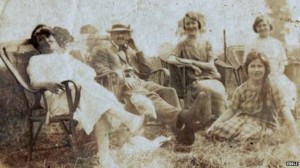
 The Inaugural Margaret McCoubrey Lecture
The Inaugural Margaret McCoubrey Lecture
